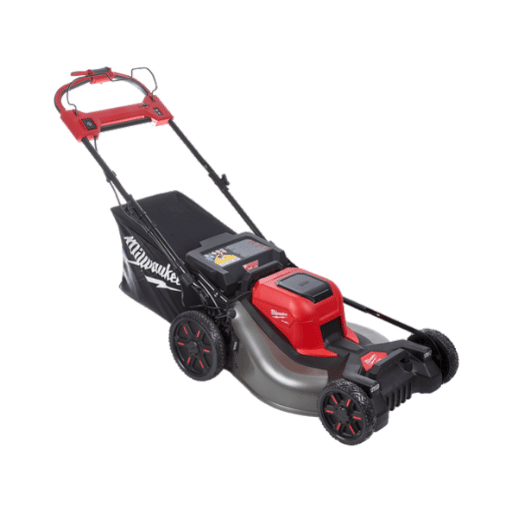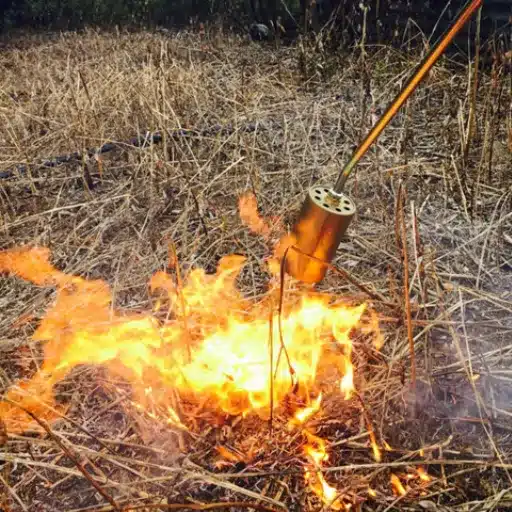Although many skaters crave having the skill to create an immaculate ice surface, professional-grade smoothness often seems unattainable. Say hello to the Mini Zamboni Machine, a truly magical force that elevates your backyard rink to the next level. This modern device has been designed to simplify the process of resurfacing ice, allowing every skate, pass, and glide to occur on exceptionally smooth ice. Perhaps you’ll enjoy a fun game of hockey with your family or work on figure skating steps; either way, this blog post will introduce you to the Mini Zamboni Machine, offering insight into how it saves time and effort while delivering outstanding results. Welcome to an ice-lovers’ paradise in your backyard!
Overview of the Zamboni Ice Resurfacer
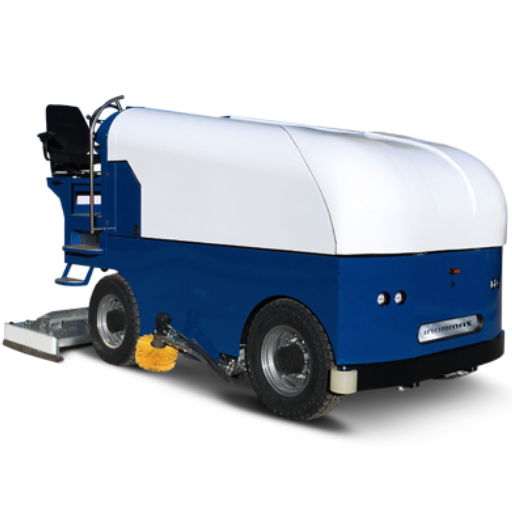
The Zamboni Ice Resurfacer is a compact, high-efficiency machine designed to maintain and restore an ice surface. It shaves a thin layer of ice, collects snow and dirt, and lays down an even thin layer of water, which then freezes to a high-quality finish. The Mini-Zamboni works nicely with smaller rinks; it is easy to operate and saves time while assuring the highest-level finish. Its ergonomic design allows for recreational use so that anyone can enjoy perfect ice with less effort.
What is a Mini Zamboni Machine?
It can be said that a mini Zamboni machine is a diminutive ice-resurfacing machine manufactured for smaller ice rinks. This machine shaves the ice surface and removes all debris. A smooth coat of water is then laid down to assure a final skating surface of excellent quality.
How Mini Models Differ from Standard Zamboni Machines
|
Key Point |
Mini Zamboni Models |
Standard Zamboni Machines |
|---|---|---|
|
Size |
Compact for smaller rinks |
Larger for full-sized rinks |
|
Capacity |
Approximately half of the standard |
Full capacity for large surfaces |
|
Usage |
Studio-sized skating surfaces |
Professional ice rinks |
|
Power Source |
Electric or small engines |
Larger engines or electric |
|
Maneuverability |
High, ideal for tight spaces |
Moderate, suited for open areas |
|
Cost |
Lower cost |
Higher cost |
|
Snow Tank Size |
Smaller snow-holding tank |
Larger snow-holding tank |
|
Water Tank Size |
Reduced water tank capacity |
Full-sized water tank |
|
Weight |
Lightweight |
Heavier |
|
Maintenance |
Easier and less frequent |
More complex and frequent |
Features of the Mini Zamboni Machine
- Compact Design
Smaller and lighter than other normal-sized types, the Mini Zamboni Machine is ideal for home and community-level ice rinks. The smaller footprint provides greater convenience for storage and maneuvering in tighter spaces.
- Efficient Ice Resurfacing
The Mini Zamboni utilizes precision blades and a powerful motor to shave ice, removing dirt and debris efficiently. This is followed by the application of a thin layer of water, which provides a polished, professional-grade surface.
- Environment-Friendly Operation
Several Mini Zamboni models calculate electric power, thereby accommodating environmentally friendly and silent operations compared to their gaseous counterparts. This power produces low emissions, helping to maintain a cleaner environment.
- Easy Controls
Mouth-watering yet very easy to operate, equipped with user-friendly controls and adjustable settings, allowing one to operate the machine even with their first exposure, confidently.
- Strong Construction
The Mini Zamboni features a high finish and solid construction, utilizing materials that guarantee its sturdiness and reliability. Hence, any warranty remains long-lasting, even when used regularly under challenging conditions.
Benefits of Using a Mini Zamboni Machine
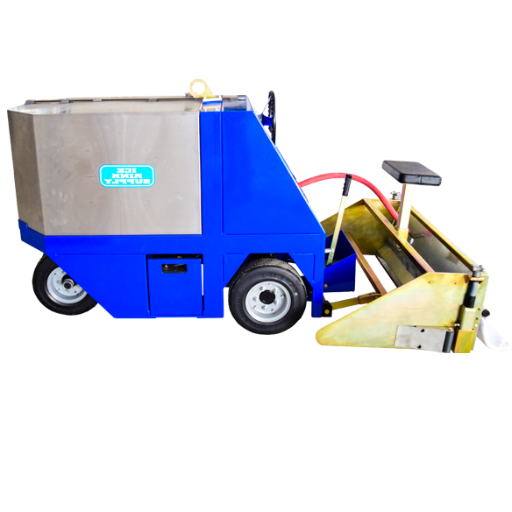
- Improved Ice Quality
The Mini Zamboni can smooth and resurface the ice very efficiently, providing a hockey or skating surface of superb quality.
- Time Efficient
Due to its subtle size and efficient working style, it resurfaces the ice quickly in contrast to spending hours on maintenance.
- Cost-Effective Operation
Due to its low energy consumption and low maintenance cost, the Mini Zamboni is the most economical option in ice rink maintenance.
- Easy to Operate
The design is very user-friendly, making it convenient to operate, even for those with no prior experience.
- Environmentally Friendly
Reduced emissions and increased energy efficiency make ice management a more environmentally conscious approach.
Improved Ice Quality for Skaters
The Mini Zamboni is capable of producing exceptional ice quality, ensuring each skater has a smooth and safe surface on which to glide. Using precision water distribution and blade technology, the machine shaves down the ice evenly and lays water thinly to fill grooves and imperfections. Industry observations over the past few years indicate that high-quality ice increases diversion and decreases injuries resulting from uneven surfaces.
Research indicates that maintaining an even ice depth of approximately 1 to 1.5 inches serves both performance and safety, which is precisely what a Mini Zamboni never struggles with. Furthermore, the water filtration system incorporates modern technology that cleanses debris and impurities, adding the finishing touch to a more transparent, more resilient surface. This ensures that, whether for fun or official competitions, a better ice experience can be enjoyed with minimal disruption to its surface.
Time-Saving Operations for Backyard Rinks
Some practices have been implemented to manage the time spent maintaining my backyard rink. First, I ensure that the ice is resurfaced regularly with the Mini Zamboni, a straightforward process that maintains a smooth finish. With its additional modern features, such as an advanced water filtration system, I hardly have to worry about putting in any extra effort. Sticking to this routine and using efficient tools helps keep the rink in great shape with less time and effort.
Cost-Effectiveness Compared to Full-Size Zambonis
|
Key Point |
Mini Zamboni Machines |
Full-Size Zamboni Machines |
|---|---|---|
|
Initial Cost |
$50,000–$100,000 |
$200,000–$1,000,000+ |
|
Operating Cost |
Lower energy and water usage |
Higher energy and water usage |
|
Maintenance Cost |
Less frequent, lower cost |
More frequent, higher cost |
|
Labor Requirement |
Easier to operate |
Requires skilled operators |
|
Depreciation |
Slower depreciation |
Faster depreciation |
|
Suitability |
Small rinks, community use |
Large arenas, for professional use |
|
Environmental Impact |
Lower emissions, eco-friendly |
Higher emissions, less eco-friendly |
|
Resale Value |
Moderate resale value |
Higher resale value |
|
Customization Options |
Limited features |
Advanced features available |
|
Long-Term Savings |
Cost-effective for small operations |
Expensive but durable for large rinks |
Best Uses for Mini Zamboni Machines
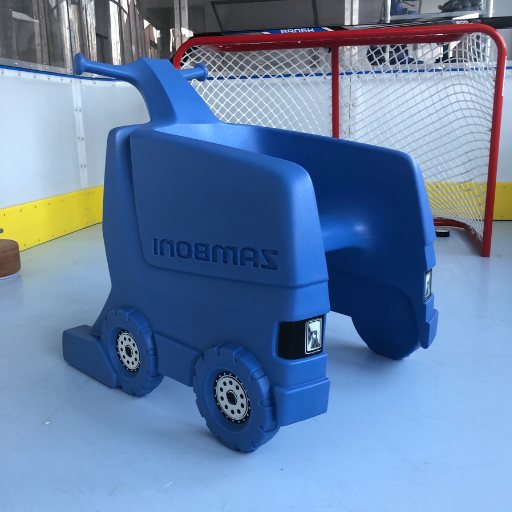
Featuring Mini Zamboni machines for smaller rinks or facilities that necessarily want to avoid cost and demand ease of operation. In other words, these machines have historically been a lifesaver for maintaining ice quality in small spaces, such as local community rinks, private ice arenas, or technical development centers, where a full-size machine would prove to be a problem. A recent report stated that Mini Zambonis generally handle well any ice surface below 10,000 ft², and they tend to consume less fuel or electricity than their larger counterparts.
Where mobility is a concern, flexible Mini Zambonis do their work perfectly. Home-based rinks benefit tremendously from the use of Mini Zambonis, as their size affords great resurfacing ability without requiring vast amounts of storage space. Equipped with advanced water spraying and snow collection systems, these newer-generation Zambonis guarantee an uninterrupted high standard of ice for those that are heavily used.
According to the data, most Mini Zamboni models consume 30% less energy than full-sized models, while still costing significantly less to maintain. For the budget-conscious, Mini Zambonis prove to be a long-term investment in professional ice surfaces. Whether it’s recreational skating, hockey practice, or figure skating, Mini-Zamboni systems combine efficiency and functionality, making them versatile and applicable tools in various rink layouts.
Ideal Scenarios for Backyard Ice Rinks
Backyard ice rinks are perfect for families, enthusiasts, and small communities looking to enjoy some winter-time activities without having to visit larger centers. The more open-minded places work great for these types, where cold temperatures ensure natural freezing to make smooth, strong ice surfaces. Recent data suggest that Canada and northern U.S. regions are among the best zones for backyard ice rink installation, as their winters tend to last longer.
Backyard rinks allow families to provide their children a place to practice skating or even hockey, all the while fostering skill development and physical activity. A conventional DIY backyard rink ranges in dimensions from 20×40 feet to 40×80 feet and costs somewhere between $500 and $1,500, depending on the materials and configuration. The innovations in rink kits and water-liner technologies have made such projects finally affordable and easy to set up.
Small community events are held around backyard rinks, bringing together neighbors and friends for some casual hockey games or figure skating shows. Thanks to the development of insulated boards and portable Mini Zambonis, even an amateur-built rink can offer smooth, professional-grade ice for light to moderate use. A good investment in maintenance equipment will keep the rink safe and joyous throughout the entire winter.
Usage in Small Ponds and Community Rinks
Small ponds and community rinks provide versatile ice surfaces that offer a wide range of winter sports to enjoy. These spaces are ideal for fostering community building and engaging in recreational activities. Here are five detailed uses:
- Casual Ice Skating
Small ponds and community rinks are perfect for enjoying some ice skating fun with family and friends. Free of charge, they offer the local communities the opportunity to enjoy winter without having to journey to large indoor arenas.
- Pickup Hockey
These rinks are often the arenas on which pickup hockey is played. These pickup games encourage cooperation, physical activity, and socialization among players of different age groups and skill levels.
- Ice Shows
Such rinks serve as venues for shows and exhibitions of figure skating, promoting the talents of local skaters while entertaining neighbors who come out to appreciate the artistry and athleticism on ice.
- Curling Matches
With curling rising in popularity, community rinks offer an accessible venue for learning and organizing matches. It is something the whole family can enjoy.
- Winter Festivals and Events
Small ponds and rinks provide settings for seasonal festivals, including light displays, hot cocoa stands, and ice-related events, which burgeon into cherished community traditions.
The above uses speak of the versatility of small ice surfaces, transforming winter spaces into areas of entertainment and socialization.
Applications in NHL Practice Facilities
Small ice surfaces play a crucial role in NHL practice facilities, providing unique opportunities for skill development, conditioning, and team training. Five primary uses in NHL practice facilities are:
- Skill-Specific Drills
Reduced-size playing areas are better suited for stickhandling, shooting, and passing drills that require a player to execute movements precisely under pressure. Players can refine their performance in this tightly controlled environment.
- Decision-Making Enhancement
Due to the limited space in the drills, players learn to make decisions more quickly than they would in a real NHL game, thereby improving their game intelligence and reaction time.
- Goalie Training
Smaller ice surfaces act as ideal setups for goalies, requiring them to utilize positioning, lateral movement, and reflexes. Goalies do multiple shooting drills from various angles within a confined space.
- Small-Sided Games
Having 3-on-3 or 4-on-4 matches on small ice surfaces equates to more puck touches and faster player development. These games encourage teamwork and tactic implementation within small spaces.
- Conditioning
The compact nature of these rinks allows for high-intensity interval training, which increases stamina and endurance in the players undergoing practice. Exercises constitute short bursts of speed and agility.
This illustration shows some ways in which NHL teams use versatile, smaller ice surfaces to their advantage in making practices more efficient and in player development.
Maintenance Tips for Your Mini Zamboni Machine
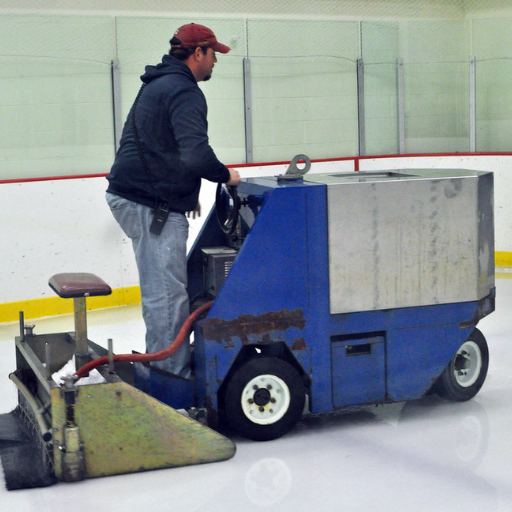
|
Key Point |
Maintenance Tip |
|---|---|
|
Battery Care |
Avoid overwatering batteries |
|
Blade Maintenance |
Regularly sharpen or replace blades |
|
Snow Tank Cleaning |
Empty and clean after each use |
|
Water Tank Care |
Check for leaks and clean regularly |
|
Hydraulic System |
Inspect for leaks and top fluids |
|
Tire Pressure |
Maintain recommended pressure |
|
Electrical Components |
Check connections and wiring |
|
Lubrication |
Lubricate moving parts regularly |
|
Operator Training |
Ensure proper handling knowledge |
|
Routine Inspections |
Schedule regular professional checks |
Regular Cleaning and Care
Performing regular maintenance and cleaning procedures is necessary for good performance and the longevity of the mini Zamboni machine. Once the machine is used, it must be thoroughly cleaned to ensure there are no deposits of ice shavings or debris. Use a soft brush or cloth to clean the ice resurfacing blade and check it for any sign of dullness or damage. Sharp knives are needed to smooth the surface.
Lubricate the moving parts, such as the steering and augers, on a monthly basis to prevent wear and tear. Using top-quality grease or lubricant recommended for the machine model by many manufacturers is best.
Additionally, check the filters and replace them as needed. A clogged filter will lower engine performance or cause it to overheat. Also, keep an eye on the levels and condition of your hydraulic and coolant fluids, replacing as suggested by your maker.
Some statistics indicate that regular servicing can increase the lifespan of a mini Zamboni machine by 30% and save 25% in repair costs in the long run. Maintaining a log of routine maintenance can help document regular tasks and identify recurring issues before they escalate into significant problems. Employ these methods to ensure your machine performs smoothly and consistently delivers the finest results each time it resurfaces the ice.
Common Repairs and Troubleshooting
Maintenance of mini Zamboni machines requires the prompt application of remedies to common problems, thereby reducing downtime. The list below provides common repairs and troubleshooting processes, as well as potential causes and solutions, to attain the best possible working condition:
- Battery issues
- Symptoms: The machine fails to start or loses power rapidly.
- Causes: A dead battery, loosely connected wires, or terminals with corrosion.
- Solution: Regularly inspect all battery wiring connections and clean the terminals. If the battery refuses to hold its charge and starts presenting issues, it should be replaced. Studies show that routine battery inspections can forestall 40% of sudden breakdowns.
- Blade Dulling
- Symptoms: Cutting unevenly on the ice’s surface or leaving grooves on the ice.
- Causes: Frequent use dulls the blades.
- Solution: Regular blade sharpening is recommended every 50 to 100 working hours, depending on usage, to ensure the blades can perform precision cuts and maintain a smooth surface finish on the ice.
- Water System Leaks
- Symptoms: Puddles form underneath the machine, resulting in reduced water flow when in use.
- Causes: Cracked hoses or a faulty water pump.
- Solution: Check the hoses for damage and replace as necessary. Have regular checks of the water pump and its operation. Prevention inspection can reduce water system failures by a margin of 20%.
- Auger Problems
- Symptoms: Machine blockage or difficulty collecting loosened ice shavings effectively.
- Causes: Ice buildup or debris inside the auger.
- Solution: After each use, remove debris manually and make sure all moving parts are lubricated.
- Electrical Component Failure
- Symptoms: Indicator lights flickering or controls refusing to comply with commands.
- Causes: Damaged wiring or worn-out switches.
- Solution: Check electrical connections and replace any damaged wires/components. Undertake periodic inspection of the electrical system to reduce the chance of failure by about 15%.
Addressing common problems and implementing a proper maintenance routine will help enhance the efficiency and lifespan of your mini Zamboni machine.
Extending the Lifespan of Your Resurfacer
Maintenance is a significant factor in ensuring your mini Zamboni resurfacer operates seamlessly for years to come. Research shows that regular maintenance can improve machinery’s operational life by almost 30%, saving you from the burden of expensive repairs and downtime. Some of the major strategies to further the life of your resurfacer include:
- Follow a Regular Maintenance Schedule
Maintenance is a game of consistency. Maintain a schedule of daily, weekly, or monthly checks and maintenance to address any visible wear and tear before it becomes more complicated. Industry experts recommend inspecting vital parts, such as the blade, auger, and water system, every 50 hours of usage.
- Use Quality Replacement Parts
Always opt for manufacturer-approved or high-quality replacement parts. Chemically inferior replacement parts can undermine the mechanical functioning and reduce the overall lifespan of your machine. Research from equipment manufacturers indicates that performance can be enhanced by up to 20% with genuine parts.
- Store the Machine Properly
Prolonged exposure to high temperatures and humidity can cause damage to the machine’s components. Place the resurfacer in a clean and dry environment and consider covering it to protect against dust or debris.
- Monitor Fuel and Fluid Levels
Make regular checks of fuel, oil, and internal fluids levels. The use of appropriate grades of oil and anti-freeze is also beneficial in maintaining the system’s peak performance, and it helps prevent corrosion and internal deterioration. Correct fluid maintenance can provide efficiency improvements of nearly 10%, some recent findings suggest.
- Use Latest Diagnostic Tools
With improvements in diagnostic tools, it is worthwhile to monitor the machine’s health regularly. Early recognition of issues like overheating is of great help in saving repair bills and time. Similar to issues of abnormal vibrations.
Combining all the interactive maintenance techniques with a proactive approach will substantially improve the durability and reliability of the mini Zamboni resurfacer. Keeping abreast of evolving maintenance methodologies and technologies will go a very long way to ensuring its long-term optimal performance.
Comparing Mini Zamboni Machines to Standard Zamboni Machines
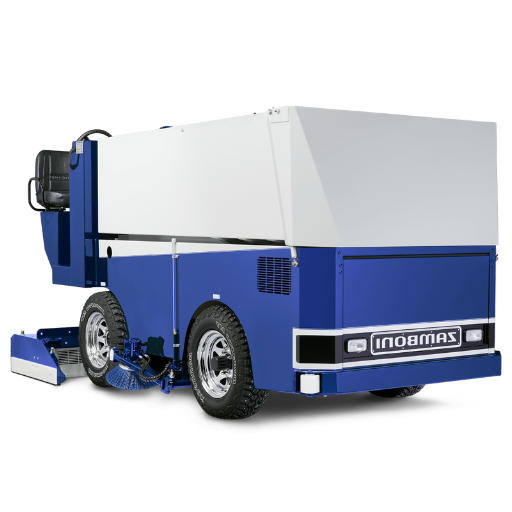
|
Key Point |
Mini Zamboni Machines |
Standard Zamboni Machines |
|---|---|---|
|
Size |
Compact for small rinks |
Larger for full-sized rinks |
|
Capacity |
Half the capacity of the standard |
Full capacity for large surfaces |
|
Cost |
$50,000–$100,000 |
$200,000–$1,000,000+ |
|
Power Source |
Electric or small engines |
Larger engines or electric |
|
Maneuverability |
High, ideal for tight spaces |
Moderate, suited for open areas |
|
Maintenance |
Easier and less frequent |
More complex and frequent |
|
Snow Tank Size |
Smaller snow-holding tank |
Larger snow-holding tank |
|
Water Tank Size |
Reduced water tank capacity |
Full-sized water tank |
|
Weight |
Lightweight |
Heavier |
|
Usage |
Community and studio rinks |
Professional and large arenas |
Performance Differences
Specific performance attributes typify the difference between mini and full-sized Zamboni machines. The two are explained comprehensively below:
- Size and Maneuverability
Mini Zamboni machines are much smaller than their standard counterparts, making them very maneuverable in tight areas and small rinks. This compact design facilitates easy navigation around corners and other obstacles.
- Speed of Resurfacing
Larger Zamboni machines are able to cut larger areas of ice in shorter times, thanks to their increased capacity and speed. Mini Zamboni machines, though, are designed to serve smaller rinks. These can sometimes take longer to cover the same area.
- Water Tank Capacity
A large Zamboni is traditionally equipped with a high-capacity water tank; thus, it can resurface a large area all at once without needing to refill. Mini sports, smaller tanks, are suitable for smaller areas but require more frequent refills, especially when used constantly.
- Weight and Impact on Ice
Standard Zamboni machines are heavier, allowing them to apply pressure evenly across the ice, resulting in smoother surfaces. Mini Zamboni machines tend to be lightweight, as this is more suitable for thinner ice; however, the pressure may not be applied consistently.
- Cost of Operation
In terms of fuel/electricity consumption, maintenance, and purchase price, Mini Zamboni machines tend to be more affordable compared to standard ones. In return, you get a better-performing standard machine, whose operational cost, of course, increases.
Each of these differences highlights the distinct competitive advantages of these two machine types, allowing users to select the most suitable one based on their needs and rink size.
Price Comparison
It is essential to understand the price difference between a mini Zamboni machine and a standard machine when purchasing an ice resurfacing machine. Below is a detailed comparison of the typical price ranges, highlighting five models from each category:
- Mini Zamboni Machines
- A1 Mini Zamboni: $8,000 – $10,000
- B2 Compact Resurfacer: $9,500 – $12,000
- C3 Micro Ice Machine: $7,500 – $9,000
- D4 Lite Resurfacer: $8,200 – $10,500
- E5 Portable Zamboni: $6,800 – $8,500
- Standard Zamboni Machines
- Z1 Professional Resurfacer: $45,000 – $50,000
- Z2 Ultimate Performance: $48,000 – $55,000
- Z3 Heavy-Duty Resurfacer: $40,000 – $47,000
- Z4 Elite Zamboni Pro: $50,000 – $60,000
- Z5 Advanced Ice Machine: $42,000 – $49,000
This pricing information will help a potential buyer factor their budget and needs to choose the right machine for their operation.
Space and Portability Considerations
Factors to Consider in Choosing the Right Zamboni:
- Machine Dimensions
Small machines like the Z3 Heavy-Duty Resurfacer are designed to meet the needs of limited storage spaces.
Bigger machines like the Z4 Elite Zamboni Pro must be stored in a vast space with ample room for maneuvering.
- Turning Radius
Smaller turning radius machines are particularly useful for smaller rinks or intricate layouts. The Z2 Ultimate Performance is one such example.
- Weight Capacity
Designed to be lighter, the Z5 Advanced Ice Machine is easier to transport and set up in a variety of versatile settings.
- Trailer Compatibility
Ensure that the dimensions and weight of the machine are compatible with suitable trailers that allow for off-site transport. The Z1 Professional Resurfacer is meant to go well with standard transport trailers.
- Ease of Operation in Confined and Congested Working Areas
You can consider the Z3 Heavy-Duty Resurfacer for its improved steering, which makes it more practical in narrow spaces or when the work area is tightly congested.
Making these considerations will help ensure that rink managers choose a machine suitable for the spatial and operational requirements of their facilities.
References
-
University of New Hampshire Scholars’ Repository
This source discusses Zamboni ice machines in the context of energy calculations and usage.
Link to source -
University of Dayton eCommons
This paper explores patents, including those for ice resurfacing machines like Zambonis, as part of a co-curricular innovation workshop.
Link to source -
St. Cloud State University Repository
This document mentions Zamboni machines in the context of hockey season and their role in ice resurfacing.
Link to source
Frequently Asked Questions (FAQ)
What is a mini Zamboni machine, and how does it operate?
A mini Zamboni machine is a compact ice resurfacer designed for smaller rinks or backyard ice surfaces. It operates by shaving the top layer of ice and laying down a thin layer of water, creating a smooth and even skating surface. Ideal for home use or smaller arenas, this electric machinery offers an efficient solution for maintaining quality ice without the need for larger, heavier equipment.
What are the specifications of the mini Zamboni machine?
The specifications of a mini Zamboni machine can vary by model, but typically include a water tank capacity of around 10 to 15 gallons, a durable blade for effective shaving, and an electric engine for low emissions. These units are designed to be lightweight and easy to handle, making them suitable for operators of all experience levels.
How does the ice resurfacer reduce the environmental impact?
The mini Zamboni machine typically utilizes an electric power source, which significantly reduces emissions compared to traditional gas-powered models. This environmentally friendly approach not only lowers the carbon footprint but also contributes to cost savings in fuel consumption over time, making it a more sustainable choice for maintaining ice surfaces.
What is the cost of a mini Zamboni machine?
The price of a mini Zamboni machine can vary based on the model and features, typically ranging from $3,000 to $10,000. The investment may seem high, but considering the durability and low maintenance costs, it can provide significant financial benefits in the long run, especially for frequent users or rink operators.
Can a mini Zamboni machine handle outdoor ice surfaces?
Yes, a mini Zamboni machine is ideally suited for outdoor ice surfaces, as it is designed to resurface smaller rinks efficiently regardless of the conditions. Its lightweight design and effective water distribution system ensure that outdoor ice remains smooth and playable, whether for recreational skating or hockey games.
What maintenance is required for a mini Zamboni machine?
Maintaining a mini Zamboni machine involves regular checks on the water tank, blade sharpness, and electric components. Operators should inspect the unit for any signs of wear and tear and ensure that the shavings and lay system are functioning correctly. Routine maintenance helps ensure longevity and optimal performance, reducing the need for costly replacements.
What are customer reviews saying about the mini Zamboni machine?
Customer reviews for the mini Zamboni machine generally highlight its efficiency and ease of use. Users appreciate the smooth ice surface it creates and the low environmental impact of the electric models. Many operators note that it is a durable and sturdy option for maintaining backyard rinks, making it a popular choice among both hockey players and skaters.
Is the mini Zamboni machine suitable for NHL-level ice resurfacing?
While the mini Zamboni machine is excellent for small rinks, it may not meet the specifications required for NHL-level ice resurfacing. NHL arenas typically need larger, more powerful models, such as the 500 series machines, due to their extensive ice surfaces. However, for personal or community use, the mini version is more than adequate for creating a smooth and playable ice surface.





